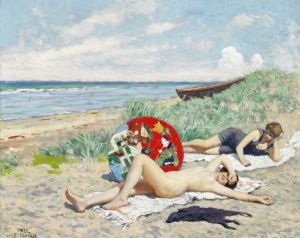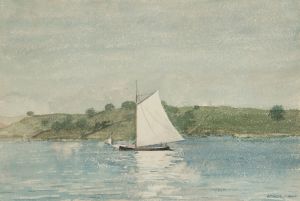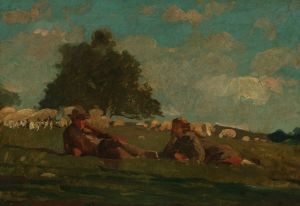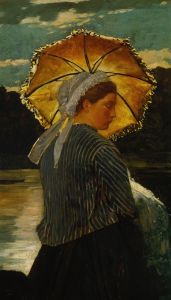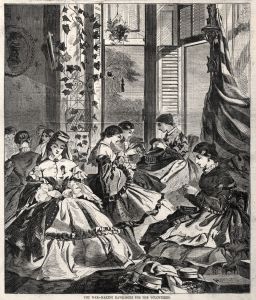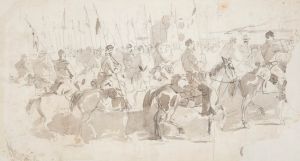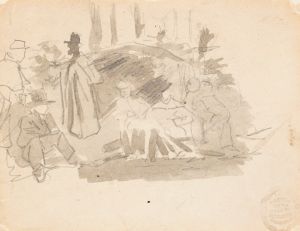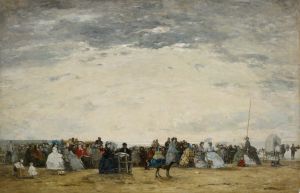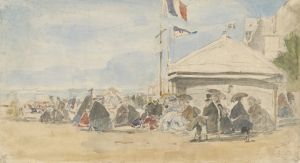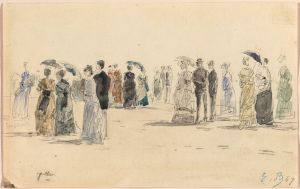
The Baths at Newport
A hand-painted replica of Winslow Homer’s masterpiece The Baths at Newport, meticulously crafted by professional artists to capture the true essence of the original. Each piece is created with museum-quality canvas and rare mineral pigments, carefully painted by experienced artists with delicate brushstrokes and rich, layered colors to perfectly recreate the texture of the original artwork. Unlike machine-printed reproductions, this hand-painted version brings the painting to life, infused with the artist’s emotions and skill in every stroke. Whether for personal collection or home decoration, it instantly elevates the artistic atmosphere of any space.
"The Baths at Newport" is a watercolor painting created by the American artist Winslow Homer in 1873. Homer, known for his masterful depictions of American life and landscapes, was particularly skilled in the medium of watercolor, which he used extensively throughout his career. This painting is one of the works he produced during his time in Newport, Rhode Island, a popular summer destination for the wealthy during the late 19th century.
The artwork captures a seaside scene, characteristic of Homer’s interest in coastal themes and his ability to depict the interplay of light, water, and human activity. In "The Baths at Newport," Homer portrays figures enjoying leisure time by the ocean, a subject that reflects the growing popularity of seaside resorts in America during this period. The painting showcases Homer’s keen observation of human behavior and his ability to convey a sense of place and atmosphere.
Homer’s use of watercolor in this piece demonstrates his technical skill and innovative approach to the medium. The transparency and fluidity of watercolor allowed him to capture the shimmering effects of sunlight on water and the breezy, relaxed mood of the scene. His choice of subject matter and technique aligns with the broader trends of the time, as American artists increasingly turned their attention to scenes of modern life and leisure.
"The Baths at Newport" is part of a series of works Homer created in the early 1870s, a period during which he began to focus more on watercolors as a primary medium. This shift marked a significant development in his artistic career, as he moved away from the oil paintings and Civil War illustrations that had initially brought him recognition. The painting is also indicative of Homer’s growing interest in the relationship between humans and nature, a theme that would continue to define much of his later work.
Today, "The Baths at Newport" is recognized as an important example of Homer’s early watercolor work and his ability to capture the essence of 19th-century American life. The painting is held in the collection of the Cooper Hewitt, Smithsonian Design Museum in New York City, where it remains a testament to Homer’s enduring legacy as one of America’s most celebrated artists.






